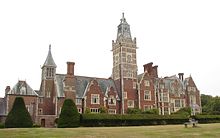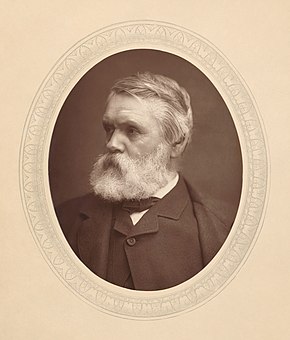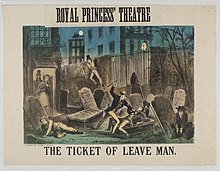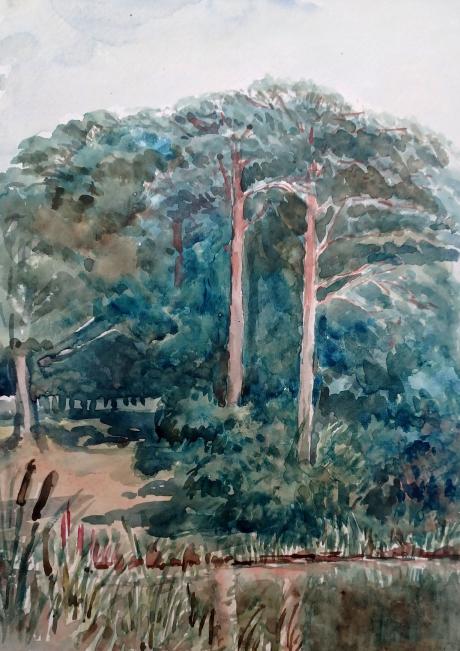inscribed and dated "Near the Water at Aldermaston Sun Aug 8 1858" and signed with initials "TT"
Tom and Laura Taylor and thence by descent
Aldermaston is a village and civil parish in Berkshire, England. In the 2011 census, the parish had a population of 1,015. The village is in the Kennet Valley and bounds Hampshire to the south. It is approximately 8 miles (13 km) from Newbury, Basingstoke, and Reading and is 46 miles (74 km) from London.
Aldermaston may have been inhabited as early as 1690 BCE; a number of postholes and remains of cereal grains have been found in the area. Written history of the village is traced back at least as far as the 9th century CE, when the Anglo-Saxon Chronicles showed that the Ealdorman of Berkshire had his country estate in the village. The manor of Aldermaston was established by the early 11th century, when the village was given to the Achard family by Henry I; the manor is documented in the Domesday Book of 1086. St Mary the Virgin Church was established in the 13th century, and some of the original Norman architecture remains in the building's structure. The last resident Lord of the Manor, Charles Keyser, died in 1929. Aldermaston Court, the manor estate and house, was requisitioned for armed forces use during the Second World War.
The name "Aldermaston" is well known in connection with the UK's nuclear weapons programme, as well as the Campaign for Nuclear Disarmament. The Atomic Weapons Establishment (AWE), which develops, maintains, and disposes of the UK's nuclear weaponry is in the parish. Built on the site of the former RAF Aldermaston, the plant has been the destination of numerous Aldermaston Marches. Until 2006, the village was home to the Aldermaston Pottery, which was established by Alan Caiger-Smith and Geoffrey Eastop in 1955.
See also: Aldermaston Court § History of the estate

Evidence suggests that Aldermaston was inhabited in the 12th century CE, possibly extending back to 1690 BCE. Radiocarbon dating on postholes and pits in the area show activity from 1690 to 1390, 1319 to 1214, and 977 to 899 BCE. Wheat and barley grains have been found in these excavations. Tests show that most of the barley was dehulled, but that absence of such debris may mean that the cereal was brought in from other areas.
Middle Ages
Before the 1066 Norman conquest, the land and properties of Aldermaston formed part of the estates of Harold Godwinson, the Earl of Wessex, who later became King Harold II of England. Harold's assessment of Aldermaston valued the village's 15 hides at £20 a year. As with much of the land seized by William the Conqueror after his arrival in England in 1066, Aldermaston was held in demesne. His Domesday Book of 1086 identified the existence of a mill, worth twenty shillings, and two fisheries, worth five shillings. During the rest of William's reign, and that of his son William Rufus, Aldermaston was owned by the Crown.
The history of the Lords of the Manor of Aldermaston Court can be traced to Achard D'Aldermaston, who was born in 1036.[citation needed] Six families have had lordship of the Aldermaston estate. In the 11th century, Henry I gave Aldermaston to Robert Achard (or Hachard) of Sparsholt. In the mid-12th century, the Achard family founded the church of St Mary the Virgin. In 1292, Edward I granted the right for the lord of the manor to hold a market in the village. Another charter was granted by Henry IV, with evidence that the market existed until approximately 1900. The Achards also established an annual fair to observe the feast of St. Thomas the Martyr on 7 July.

Aldermaston was held by the Achard family until the 14th century, when it passed through marriage to Thomas De La Mare of Nunney Castle, Somerset. The De La Mare family governed Aldermaston for approximately 120 years, until Elizabeth De La Mare whose male relatives predeceased her—married into the Forster family. In about 1636, the Forsters built a large manor house to the east of the church. The house incorporated parts of an earlier (15th century) house, including the chimney stacks.The Forsters' house was fronted by two porches, separated by a central section with seven bays. The porches had ornate Solomonic columns, similar to those at the University Church of St Mary the Virgin in Oxford.
The interior of the house featured a number of mythical statues, as well as artwork by Gaspard Dughet, portraits of William Congreve and Godfrey Kneller, and Tintoretto's Esther Before Ahasuerus. The house's Jacobean garden featured patterns of groves and avenues of oak, yew, Spanish chestnut and lime trees. In the early 18th century the Forsters oversaw the building of almshouses in Church Road. Built by R Dixon in 1706, the houses became known as "Dixon's Cottages". The manor passed through the Forster family until 1752, when the Forster lineage ended and the estate was inherited by Ralph Congreve, the husband of the last Forster's grand-niece. On Ralph's death a second-cousin of dramatist William Congreve inherited the manor. The Congreve Family owned the estate at the time of the 1830 Swing Riots. The rioters marched across Aldermaston, wrecking twenty-three agricultural machines. Workers were so frightened by the riots that they left their machinery in the open in an attempt to limit additional damage.


In 1843, the manor house was destroyed by fire, news of which was carried in The Illustrated London News. The estate passed into the Court of Chancery and was purchased by Daniel Higford Davall Burr. In 1848, Burr commissioned the building of a neoclassical mansion to the south west of the original building. Burr saved the 17th-century manor's wooden staircase, though all that remains of the building is a staircase to the cellar (which is now home to a colony of bats). By 1851 the new building was complete, costing £20,000 and having a Tudor-like appearance. Burr held the estate until his death 50 years later, when this was inherited by his son, who sold it in 1893.
The buyer was the wealthy stockbroker Charles Edward Keyser, who was preoccupied with the idea of keeping the village unchanged—or, as he described it, "unspoilt". He forbade advertisements, opposed all modernisation and refused to allow any expansion by the building of houses. He did, however, commission the building of a parish hall in 1897 and provided the village with a water supply, and the water fountain on the small village green was installed to commemorate Queen Victoria's Diamond Jubilee. Keyser oversaw the restoration of the village almshouses in 1906 and 1924, and defrayed the cost of a memorial oak tablet in memory of those killed in World War I. Of the 100 men from the village who served in the war, 22 were killed (the highest percentage of town population in the country). The tablet bears the name of each man lost in action.
During Keyser's lordship, John Marius Wilson's Imperial Gazetteer of England and Wales listed Adminston as a possible name for the village. On his death in 1929, his wife, Mary, continued to occupy the house until she died in 1938. The estate was auctioned off in September 1938, and many lots were purchased by their occupiers. The manor house was bought by Associated Electrical Industries (AEI) for £16,000. One of the houses in the village is recorded as having fetched £1,375. As AEI's chairman, Felix Pole became the de jure Lord of the Manor upon their purchase of Aldermaston Court.
During the 1940s RAF Aldermaston was created on the parkland at the southern end of the parish, with the Women's Land Army and the XIX Tactical Air Command stationed on the estate. After World War II, the manor was returned to AEI who built the MERLIN reactor on part of the land. The reactor was opened on 6 November 1959 by The Duke of Edinburgh. With the opening of the Atomic Weapons Research Establishment (AWRE) in 1950, Aldermaston became synonymous with a number of Campaign for Nuclear Disarmament (CND) marches.
In 1953, Pole stepped down as Lord of the Manor and was succeeded by AEI's senior representative, Thomas Allibone. Allibone held the position for 32 years, until Blue Circle Industries acquired the estate in 1985. Allibone was succeeded by Tony Jackson, and the current Lord of the Manor is Andy Hall. Blue Circle could not gain planning permission in the grounds of the court, so the MERLIN reactor was demolished to make way for Portland House. With a full redevelopment of Aldermaston Manor, the £14 million office development became Blue Circle's international headquarters and the complex was opened by Prince Richard, Duke of Gloucester.
The village of Aldermaston derives its name from Ældremanestone, Eldremanestune or Hedlremanestone, the Old English for "Ealdorman's Homestead". The Ealdorman—or Alderman—was a person of extreme importance, equating to the modern-day Lord-Lieutenant of the county. Although his country estate was in Aldermaston, he would have spent most of the time in the original county town of Wallingford.The Anglo-Saxon Chronicle states that the first known Ealdorman of Berkshire, Aethelwulf, fought the Danes with Ethelred of Wessex at the nearby Battle of Englefield in 871. Other documented names include Aldermaston ad Pontem (11th century), Aldremanneston (12th century), Aldremaneston (13th century), Aldermanston and Aldermanneston Achard (14th century), and Aldmerston (19th century).[
Historically, Aldermaston was a hundred, though for a period it was within the Theale hundred. By the 19th century, the hundreds had been superseded by other sub-divisions. From then on, Aldermaston was, at times, part of the Bradfield Poor Law Union and Sanitary District, and the registration sub-districts of Mortimer (late 19th century) and Bucklebury (early 20th century). It was at all times an ecclesiastical parish and acquired civil parish status in the 1890s.[26]: 14 The civil parish council is elected by every resident on West Berkshire elections. It is in the area of West Berkshire unitary authority. The electoral ward of Aldermaston includes the neighbouring parishes of Wasing, Brimpton, Midgham, and Woolhampton.
The ward is the smallest in West Berkshire by population. The ward's councillor is Dominic Boeck, who represents the Conservative Party. Aldermaston is under the catchment of Thames Valley Police and is covered by the Brimpton Neighbourhood Policing Team. In a meeting with Aldermaston parish council, the police reported that 57 criminal offences were reported to have taken place in the parish between 2009 and 2010. Of this, the majority was theft from non-dwelling properties. Vehicle crime had dropped by 57% on the previous year but violent crime had risen from four to six incidents. Five of these crimes were reported to be domestic violence. There have been no reported cases of robbery in Aldermaston since 2006.

Aldermaston is in West Berkshire, about 2 miles (3.2 km) from the Hampshire boundary. The village is 1 mile (1.6 km) south of the A4 road that links the parish with Newbury and Reading. The main road in Aldermaston, The Street, is part of the A340 road and links the village with Pangbourne and Basingstoke. The course of Ermin Street, the Roman road that linked Calleva Atrebatum (Silchester) with Glevum (Gloucester) via Corinium Dobunnorum (Cirencester) runs south of the village, but none of the road survives in the area.
At the southern end of The Street is a small triangular village green called The Loosey—possibly named after a "Lucy" who planted the oak tree which stands on the green. The Loosey is the site of a Roman well, discovered in 1940 by a cow that almost fell down it. The Loosey was previously home to the village maypole (which was often climbed by Daniel Burr's monkey) and a drinking fountain erected by Charles Keyser to celebrate the Diamond Jubilee of Queen Victoria.
The River Kennet and River Enborne flow through the parish, and their confluence is approximately 0.6 miles (0.97 km) north of the village.: 3 The Kennet and Avon Canal forms part of the parish's boundaries with Woolhampton and Padworth. Sections of Grim's Bank are in the parish. Part of the earthwork in the AWE complex survives at a height of 3.3 metres (11 ft) and with a ditch 0.9 metres (3.0 ft) deep.The village has a couple of Sites of Special Scientific Interest called West's Meadow and Aldermaston Gravel Pits.
Geology
The landscape of Aldermaston is influenced by Paices Hill and Rag Hill, which are extremities of the chalk formation the North Wessex Downs as part of the Thames Basin Heaths. The topography of the land in the parish generally slopes northward to the River Kennet. The soil in the parish is high in clay. Due to the parish's location within the Kennet Valley there is a high concentration of alluvium, with the content largely determined by the London Clay Formation, the Bagshot Formation, and the Bracklesham Beds.
Flooding


The quite flat low clay of Aldermaston's north has with exceptional rainfall led to flooding certain populous streets on three occasions—1971, 1989, and 2007.The flood in 1971 caused by torrential rain was exacerbated by the non-porous tarmac and buildings of the Atomic Weapons Establishment which managed for the first time to overwhelm its balancing ponds.: This happened again in July 1989, when an average of 6 inches (150 mm) of rain was deposited across the parish in two hours; water rose 5 feet (1.5 m) above the ponds and broke through a brick wall. The destroyed wall was rebuilt with 17 grilles to avoid another build-up of water. 88 A donation of £10,000 was given to the village by Blue Circle.:
In July 2007, torrential rain flooded some of the traditional village centre and primary school. The storm coincided with the annual Glade Festival and jeopardised the event. The festival gates were temporarily closed while organisers assessed the flooding, which submerged one of the stages. The festival's car park was incapacitated, with thousands of revellers stranded in the village and surrounding lanes.The floods also hit the Church of England primary school, with the Royal Berkshire Fire and Rescue Service evacuating pupils and staff from the school in life rafts.
The evacuation used four rafts, rescuing pupils and teachers from the school through windows. The 165 people (140 pupils and 25 members of staff) were taken uphill to the parish hall, where blankets and sleeping bags had been provided. Thames Valley Police stated that the emergency services were "really stretched because of what happened over the county and the Glade event", that "the A340 road junction was two or three-foot under water", and predicted that "a lot of householders would be homeless."

Tom Taylor (19 October 1817 – 12 July 1880) was an English dramatist, critic, biographer, public servant, and editor of Punch magazine. Taylor had a brief academic career, holding the professorship of English literature and language at University College, London in the 1840s, after which he practised law and became a civil servant. At the same time he became a journalist, most prominently as a contributor to, and eventually editor of Punch.
In addition to these vocations, Taylor began a theatre career and became best known as a playwright, with up to 100 plays staged during his career. Many were adaptations of French plays, but these and his original works cover a range from farce to melodrama. Most fell into neglect after Taylor's death, but Our American Cousin (1858), which achieved great success in the 19th century, remains famous as the piece that was being performed in the presence of Abraham Lincoln when he was assassinated in 1865.
Early years
Taylor was born into a newly wealthy family at Bishopwearmouth, a suburb of Sunderland, in north-east England. He was the second son of Thomas Taylor (1769–1843) and his wife, Maria Josephina, née Arnold (1784–1858). His father had begun as a labourer on a small farm in Cumberland and had risen to become co-owner of a flourishing brewery in Durham. After attending the Grange School in Sunderland, and studying for two sessions at the University of Glasgow, Taylor became a student of Trinity College, Cambridge in 1837, was elected to a scholarship in 1838, and graduated with a BA in both classics and mathematics. He was elected a fellow of the college in 1842 and received his MA degree the following year.

Taylor left Cambridge in late 1844 and moved to London, where for the next two years he pursued three careers simultaneously. He was professor of English language and literature at University College, London, while at the same time studying to become a barrister, and beginning his life's work as a writer. Taylor was called to the bar of the Middle Temple in November 1846. He resigned his university post, and practised on the northern legal circuit until he was appointed assistant secretary of the Board of Health in 1850. On the reconstruction of the board in 1854 he was made secretary, and on its abolition in 1858 his services were transferred to a department of the Home Office, retiring on a pension in 1876.
Writer
Taylor owed his fame and most of his income not to his academic, legal or government work, but to his writing. Soon after moving to London, he obtained remunerative work as a leader writer for the Morning Chronicle and the Daily News. He was also art critic for The Times and The Graphic for many years. He edited the Autobiography of B. R. Haydon (1853), the Autobiography and Correspondence of C. R. Leslie, R.A. (1860) and Pen Sketches from a Vanished Hand, selected from papers of Mortimer Collins, and wrote Life and Times of Sir Joshua Reynolds (1865). With his first contribution to Punch, on 19 October 1844, Taylor began a thirty-six year association with the magazine, which ended only with his death. During the 1840s he wrote on average three columns a month; in the 1850s and 1860s this output doubled. His biographer Craig Howes writes that Taylor's articles were generally humorous commentary or comic verses on politics, civic news, and the manners of the day. In 1874 he succeeded Charles William Shirley Brooks as editor.
Taylor also established himself as a playwright and eventually produced about 100 plays. Between 1844 and 1846, the Lyceum Theatre staged at least seven of his plays, including extravanzas written with Albert Smith or Charles Kenney, and his first major success, the 1846 farce To Parents and Guardians. The Morning Post said of that piece, "The writing is admirable throughout – neat, natural and epigrammatic". It was as a dramatist that Taylor made the most impression – his biographer in the Dictionary of National Biography (DNB) wrote that in writing plays Taylor found his true vocation. In thirty-five years he wrote more than seventy plays for the principal London theatres.

A substantial portion of Taylor's prolific output consisted of adaptations from the French or collaborations with other playwrights, notably Charles Reade. Some of his plots were adapted from the novels of Charles Dickens or others. Many of Taylor's plays were extremely popular, such as Masks and Faces, an extravaganza written in collaboration with Reade, produced at the Haymarket Theatre in November 1852. It was followed by the almost equally successful To Oblige Benson (Olympic Theatre, 1854), an adaptation from a French vaudeville. Others mentioned by the DNB are Plot and Passion (1853), Still Waters Run Deep (1855) and The Ticket-of-Leave Man (based on Le Retour de Melun by Édouard Brisebarre and Eugène Nus), a melodrama produced at the Olympic in 1863.Taylor also wrote a series of historical dramas (many in blank verse), including The Fool’s Revenge (1869), an adaption of Victor Hugo's Le roi s'amuse (also adapted by Verdi as Rigoletto), 'Twixt Axe and Crown (1870), Jeanne d'arc (1871), Lady Clancarty (1874) and Anne Boleyn (1875). The last of these, produced at the Haymarket in 1875, was Taylor's penultimate piece and only complete failure. In 1871 Taylor supplied the words to Arthur Sullivan's dramatic cantata, On Shore and Sea.
Like his colleague W. S. Gilbert, Taylor believed that plays should be readable as well as actable; he followed Gilbert in having copies of his plays printed for public sale. Both authors did so at some risk, because it made matters easy for American pirates of their works in the days before international copyright protection. Taylor wrote, "I have no wish to screen myself from literary criticism behind the plea that my plays were meant to be acted. It seems to me that every drama submitted to the judgment of audiences should be prepared to encounter that of readers".

Many of Taylor's plays were extremely popular, and several survived into the 20th century, although most are largely forgotten today. His Our American Cousin (1858) is now remembered chiefly as the play Abraham Lincoln was attending when he was assassinated, but it was revived many times during the 19th century with great success. It became celebrated as a vehicle for the popular comic actor Edward Sothern, and after his death, his sons, Lytton and E. H. Sothern, took over the part in revivals.
Howes records that Taylor was described as "of middle height, bearded [with] a pugilistic jaw and eyes which glittered like steel". Known for his remarkable energy, he was a keen swimmer and rower, who rose daily at five or six and wrote for three hours before taking an hour's brisk walk from his house in Wandsworth to his Whitehall office.
Some, like Ellen Terry, praised Taylor's kindness and generosity; others, including F. C. Burnand, found him obstinate and unforgiving. Terry wrote of Taylor in her memoirs:
Most people know that Tom Taylor was one of the leading playwrights of the 'sixties as well as the dramatic critic of The Times, editor of Punch, and a distinguished Civil Servant, but to us he was more than this. He was an institution! I simply cannot remember when I did not know him. It is the Tom Taylors of the world who give children on the stage their splendid education. We never had any education in the strict sense of the word yet through the Taylors and others, we were educated.
Terry's frequent stage partner, Henry Irving said that Taylor was an exception to the general rule that it was helpful, even though not essential, for a dramatist to be an actor to understand the techniques of stagecraft: "There is no dramatic author who more thoroughly understands his business".
In 1855 Taylor married the composer, musician and artist Laura Wilson Barker (1819–1905). She contributed music to at least one of his plays, an overture and entr'acte to Joan of Arc (1871), and harmonisations to his translation Ballads and Songs of Brittany (1865). There were two children: the artist John Wycliffe Taylor (1859–1925) and Laura Lucy Arnold Taylor (1863–1940). Taylor and his family lived at 84 Lavender Sweep, Battersea, where they held Sunday musical soirees. Celebrities who attended included Lewis Carroll, Charles Dickens, Henry Irving, Charles Reade, Alfred Tennyson, Ellen Terry and William Makepeace Thackeray.
Taylor died suddenly at his home in 1880 at the age of 62 and is buried in Brompton Cemetery. After his death, his widow retired to Coleshill, Buckinghamshire, where she died on 22 May 1905.

